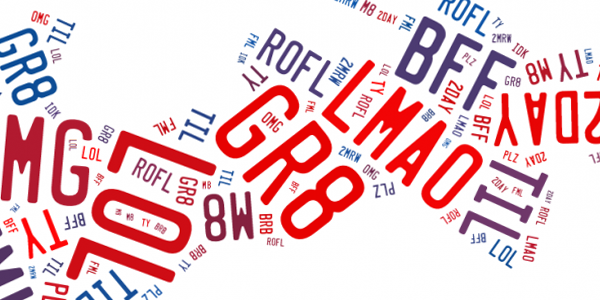Habemus Linguistics I
Since always foreign students want to learn slang. I must say I don’t understand why they have this urge to learn slang that passes from generation to generation of students. Despite that, what matters is they want to learn, slang is part of the language and no, they definitely don’t disrupt the language whatever it is. I also decline the argument that internet has been hindering the language – after all, it is considered the guilty for the accelerated metamorphosis of the language creating, then, more and more slang. Ok, but what does this have to do with us teachers? Everything.
In our recent article Having Our English Outside The Box, we talked about the possibility to play with language and still be proficient. Well, you may not like this perspective, but I recommend you get used to accepting some students’ utterances that were once reckoned as “wrong”. We have already mentioned the ultimate use of ‘because’ playing the role of preposition, but what we have been witnessing every single day is a massive attack of linguistic creativity that we teachers need to be aware so we identify whether an utterance is slang or not and, in case it is one, we have to check if the context it was used is indeed appropriate. This is our role: show our students that language has an infinite number of possibilities, but there are situations in which some linguistic forms are more adequate. It is like I always say “if we are going to a barbecue, shorts and flip-flops are ok, but if we’re going to a business meeting, we gotta suit up”. This has to be our spirit whenever our students produce (1) or (2). We have to position the appropriate moment for their utterance.
(1)That film is amaze.
(2)Totes.
Notice that I did not use the “semantically strange” symbol for there many examples of utterances such as those, therefore I consider these slangs as part of a speech community. The case in (1) was not regarded as ungrammatical also for the same reason previously stated. Furthermore, although ‘amaze’ is a reduction of ‘amazing’, playing the syntactic role of adjective, we can take into consideration that this is a new word, thus eliminating any sort of confusion it may cause with the verb ‘amaze’ which would turn the sentence ungrammatical.
Alright. You might ask me then “what’s new about all of this?”. The greatest news here is the origin of this, the internet. This wonderful man made creation that connects everything to everything to everyone has rubbed on our faces how mutant languages are. Take Twitter, for instance. It is one big source of linguistic change. Tweeters know that the message space is highly limited which forces our students to express themselves in a more objective and reduced manner, generating a mutation in the language that would make Professor Charles Xavier jealous. That is why we have the commonly known OMG, LOL and they should never be considered a defeat in language teaching, instead they have to be taken as enriching factor of the language. Imagine how creative our students have to be to convey a message in a short space. With this scenario, we will obviously have abbreviations like IDK, reductions like ‘gonna’, ‘gotta, ‘wanna’, ‘shoulda’, ‘woulda’ and, why not, syntactic changes that end up being mistaken with slangs that are part of some speech communities. And yes, our students will do their best to speak “bad English” just because it is cool. Bucholtz already wrote about it brilliantly.
Thus, my fellow teachers, we have the duty (because we’re pros) to be in touch with the online universe for it materializes in the real world and makes our students coin words, abbreviate their speech, play with the language. Therefore I say it again, the internet has not been disrupting our students’ speech, it has only been going through some changes which is normal in the teenage years and with these changes we see a new type of language, pictorial for times, that facilitates communication.

